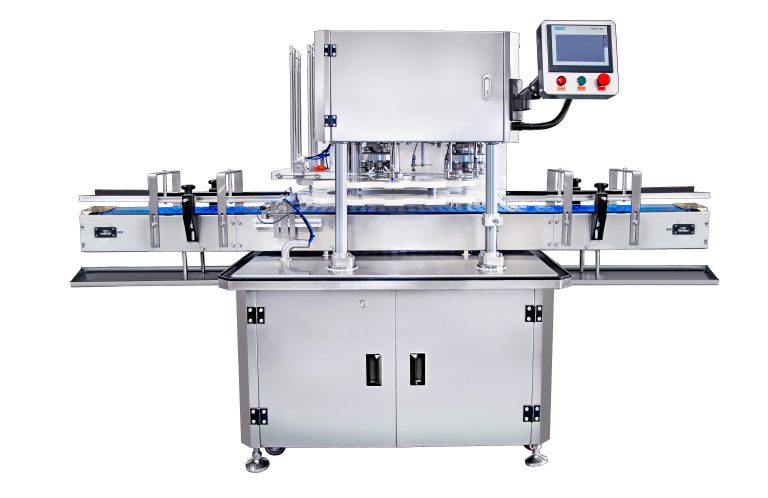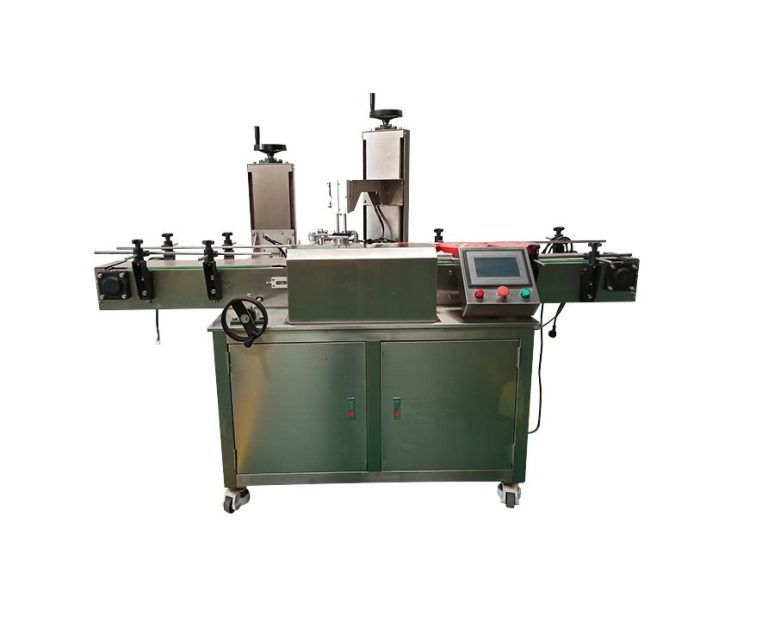In the dynamic landscape of modern manufacturing, the demand for efficient and accurate filling processes is ever – growing. Double head rotor pump filling machines have emerged as a revolutionary solution, offering a perfect blend of precision and speed to meet the diverse needs of various industries.
Table of Contents
The Mechanism Behind the Magic
At the heart of a double head rotor pump filling machine is the rotor pump, a positive – displacement device. The pump consists of a set of rotors that rotate within a carefully engineered housing. As the rotors turn, they create distinct chambers that trap the liquid at the inlet and then transport it to the outlet. This mechanism ensures a consistent and controlled flow of the liquid.
The “double head” feature is a game – changer. It means that there are two independent filling stations on the machine. These stations can operate simultaneously, allowing for the concurrent filling of two containers. This not only doubles the filling capacity but also maintains the same high level of precision at each station.
Precision: A Hallmark of Quality
Precision is of utmost importance in many industries. In the pharmaceutical sector, for example, accurate dosing of medications is a matter of life and death. Double head rotor pump filling machines offer an extremely high level of precision. The positive – displacement nature of the rotor pump allows for exact control over the volume of liquid dispensed into each container.
The machine can be calibrated to fill containers with a tolerance of just a few microliters or milliliters, depending on the requirements. This precision ensures that every product meets the strict quality standards set by the industry. In the food and beverage industry, it guarantees that each bottle of juice or jar of sauce has the same amount of product, providing consistency for consumers.

Speed: Meeting High – Volume Demands
In today’s fast – paced market, speed is essential for businesses to stay competitive. Double head rotor pump filling machines are designed to deliver high – speed filling. With two filling heads working in parallel, the throughput is significantly increased compared to single – head machines.
In a high – volume production line for cosmetics, such as lotions or shampoos, a double head machine can fill hundreds of bottles per minute. This rapid filling rate allows manufacturers to meet large – scale orders in a timely manner, reducing production lead times and increasing overall productivity.
Adaptability to Different Liquids
One of the remarkable features of double head rotor pump filling machines is their ability to handle a wide range of liquids. Whether it’s a thin, low – viscosity liquid like water or a thick, high – viscosity substance like glue or paste, these machines can adapt.
The design of the rotor pump can be adjusted to accommodate different flow characteristics. For low – viscosity liquids, the pump can operate at a higher speed to ensure fast filling, while for high – viscosity liquids, it can apply more pressure to move the liquid through the system. This adaptability makes the machine suitable for a variety of industries, from chemical manufacturing to personal care product production.
Reducing Waste and Improving Efficiency
Precise filling not only ensures product quality but also helps in reducing waste. When the filling is accurate, there is less over – filling, which means less product is wasted. Additionally, the high – speed operation of double head rotor pump filling machines reduces the overall production time, leading to improved efficiency.
The machines are also designed with easy – to – clean components. This reduces the downtime between different product runs, as the machine can be quickly cleaned and prepared for the next filling task. This further enhances the overall efficiency of the production process.
Conclusion
Double head rotor pump filling machines are a remarkable innovation in the field of filling technology. They offer the perfect combination of precision and speed, making them an ideal choice for industries that require accurate and efficient filling processes. With their adaptability to different liquids and ability to reduce waste and improve efficiency, these machines are set to play a crucial role in the future of manufacturing.





